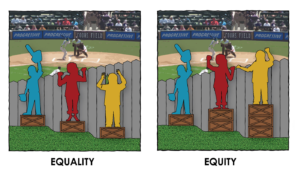Lately, I have been thinking a lot about “our stories” as a school district.
There are stories of the unique people who make up our school community, the stories we hear and tell one another about the district’s rich history, and stories of the countless proud moments for our schools.
There are also stories that emerge when we look at district data.
Historically, testing data hasn’t held much weight in Clarkston, and it will never be an accurate measure of student success in our schools, but as an administration, we couldn’t be more interested in looking beyond the surface to find the stories that our data wants to tell.
Anyone who analyzes data for a living will tell you that there’s this “a-ha” moment when the data reveals a story.
Our administrative team had a moment like that when we looked at multiple measures of literacy and math data for grades 3-5 across the district, pairing each school’s test scores with its student demographic data (socioeconomic status or SES, race/ethnicity, gender, special education services, and English language learners).
We found that student achievement mirrored socioeconomic status, and we know why: the chronic stress of poverty has an undeniable impact on a student’s ability to learn.
Our data tells us that there is a disparity in Clarkston when it comes to SES and student achievement.
If we go back to the notion of “our stories,” we must remind ourselves that our 7,287 students come to us with their own stories, and no two are the same.
How can we level the playing field for all and make sure that life circumstances are not obstacles to achieving educational potential? How can we eliminate the achievement gap?
For starters, I would call it an “opportunity gap” because this gap doesn’t reflect our students’ inherent abilities, but the disparate opportunities they are afforded.
So we look to the idea of equity, or rather, “hyper-equity” as a necessary focus for Clarkston Community Schools.
We must acknowledge the stories that our data is telling us, and solve equity challenges by deploying resources and supports based on need. It’s not about applying the same resources and supports for all students and calling it good. That’s equality, not equity.
 In the equality/equity example shown in the graphic, a solution based on equality provides each spectator with a box to stand on, but doesn’t account for the obstacles that still exist.
In the equality/equity example shown in the graphic, a solution based on equality provides each spectator with a box to stand on, but doesn’t account for the obstacles that still exist.
On the right, an equitable solution takes into consideration each person’s circumstances and provides a fair solution that puts each person in a position to have a positive experience.
I recently presented a workshop to our Board of Education on our plans to persistently pursue equitable practices in order to be a school district where all students are pushed and supported to achieve excellence. It must be known that equity does not exist in a vacuum and to narrow achievement gaps, the focus must not only be on foundational skills but also encompass whole child supports, strong relationships, and meeting every child where they are in their story of growing into the people they will become.
This is just the beginning of a conversation I will be continuing with our students, staff, parents, and community in the next several years.
I say with 100% confidence today that our eye on equity and our ability to close the achievement gap will lift us up collectively as a district.
Or, to borrow a favorite phrase from one of our elementary principals, “When one shines, we all shine.”
Shawn Ryan is superintendent of Clarkston Community Schools
